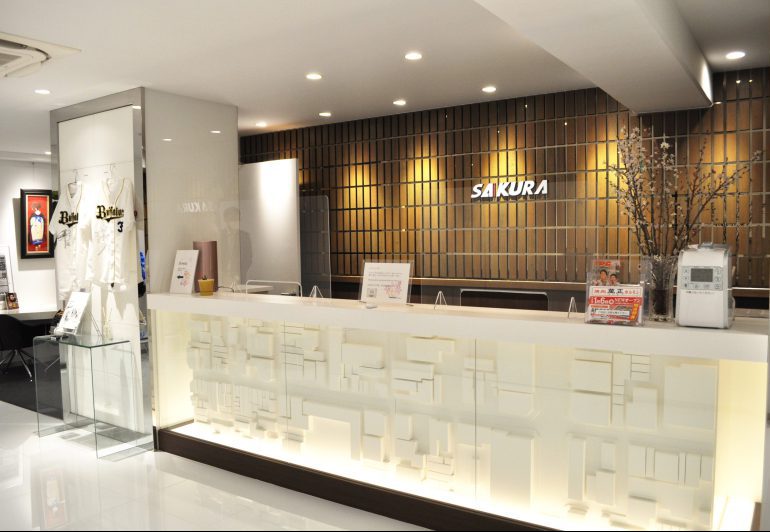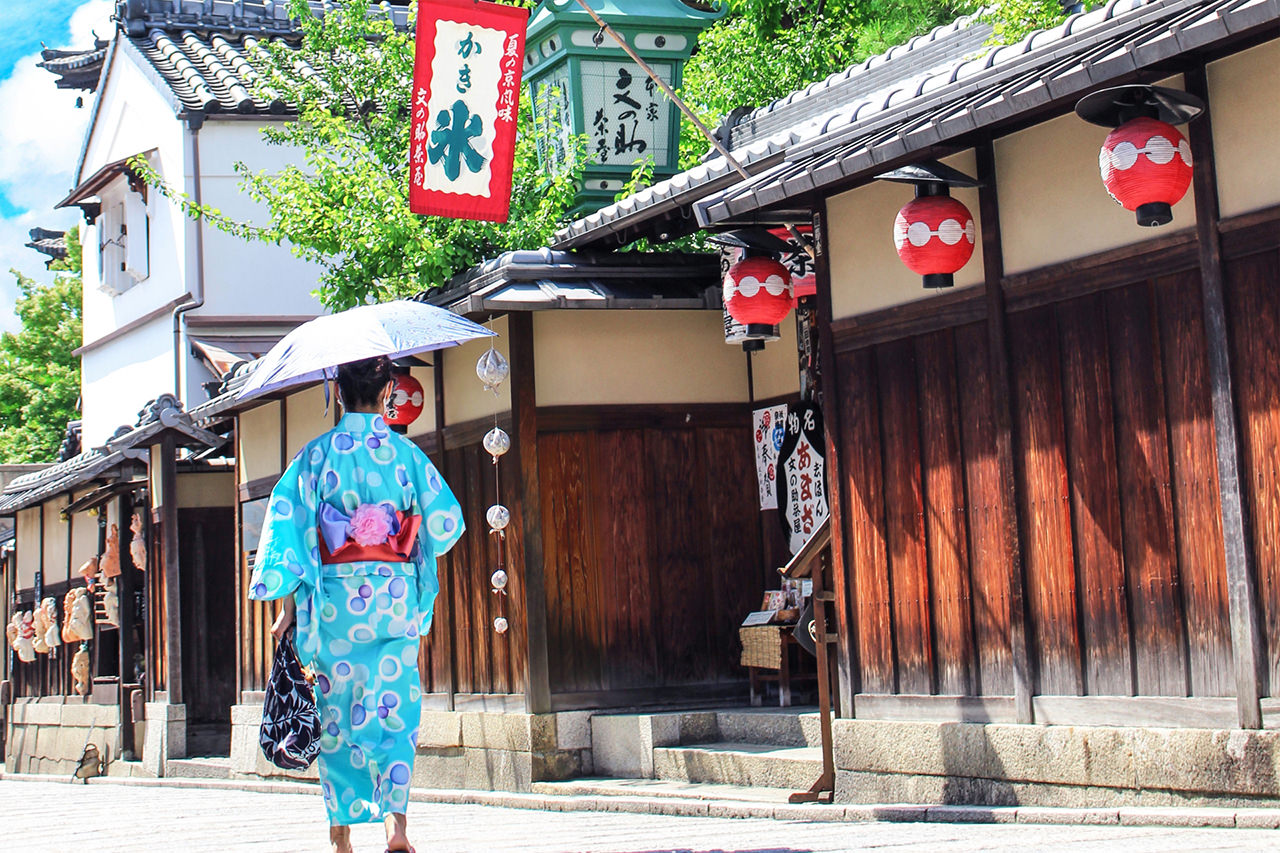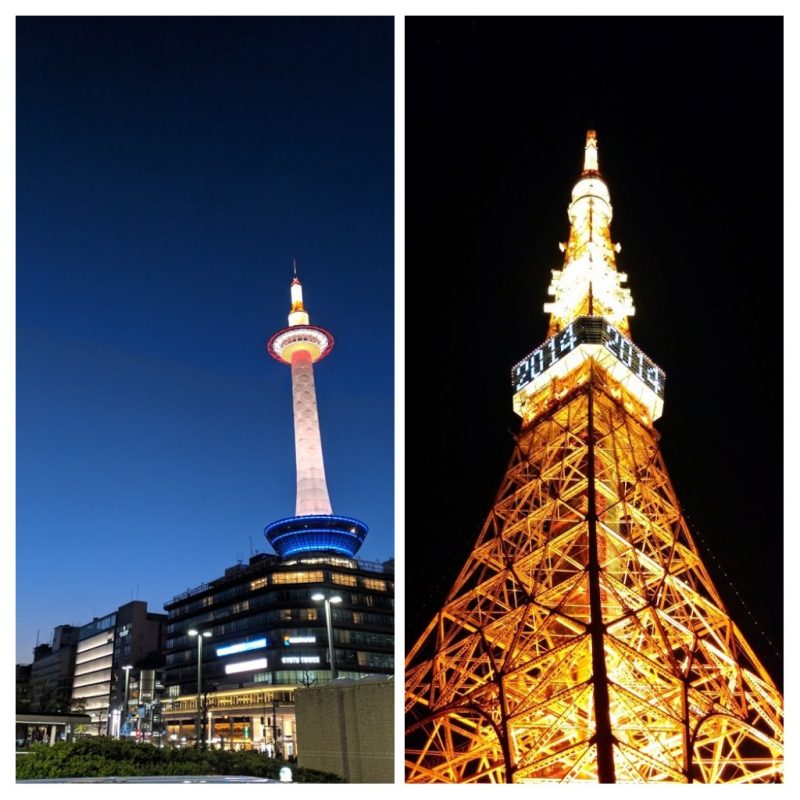A Deep Dive into Transportation in Kyoto
2024.09.27
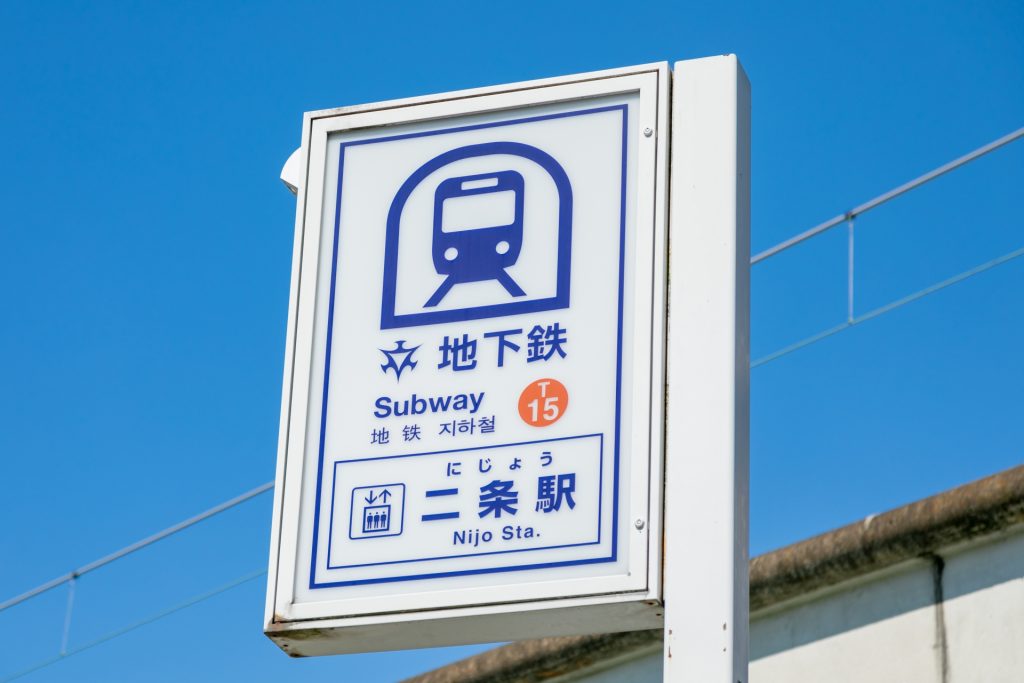
In a city as historic and beautiful as Kyoto, you’re going to want to get out and explore! But you might have to use a few different methods to get to and from school, around the city’s various shopping centers, ancient temples, and fantastic eateries. Use this article as an overview to get to know some of the options you’ll have while you’re here on study abroad, and you’ll be navigating around Kyoto like a pro in no time.
Kyoto Subway
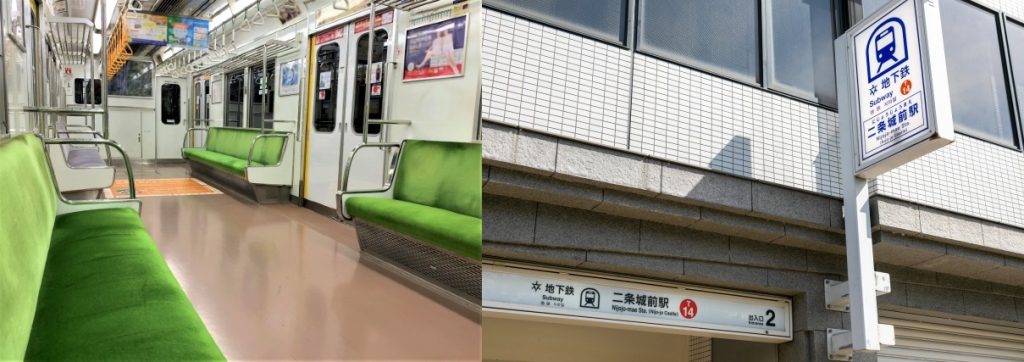
Unlike some of the sprawling subway and train systems you might see in some of Japan’s metropolises, like Tokyo, while Kyoto does have a subway system, it’s made up of an incredibly simple pair of just two lines: the Karasuma Line, which runs north-south, and the Tozai Line, which runs east-west. The two lines connect at Karasuma-Oike Station.
Because there are only two lines, which run fairly straight in one of four directions, how much you ride the Kyoto subway will depend on whether locations you frequent – like your school, home, or maybe your part-time job – fall along the stops on the line. The subway does have stops in locations like Shijo-Karasuma (Shijo Station), in Kyoto’s downtown, and at Kyoto Station, where many other trains and buses depart from. If you ride all the way to Takeda Station at the southernmost stop on the Karasuma Line, you can also change trains on the platform there to catch a ride to Nara on the Kintetsu Line (see more about trains to neighboring areas below). Meanwhile, the Tozai Line will take you through central locations like Nijo Castle and Sanjo Kawaramachi, as well as east into Yamashina, which connects Kyoto to neighboring Otsu Prefecture and Lake Biwa.
How to ride the subway in Kyoto: tickets and IC cards
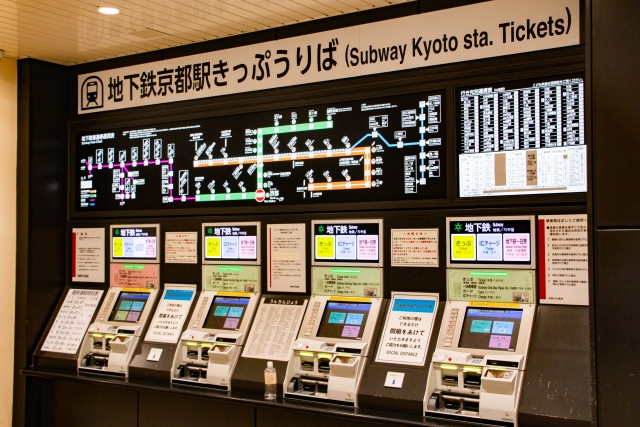
Tickets & Day Passes
You can purchase single-ride tickets for the subway from the ticket machines in each station. If you plan to be on the subway a lot in one day, you may want to look at purchasing a Subway 1-Day Pass. This pass will allow you to ride the subway as many times as you’d like for one day (just keep in mind that you will have to pay the fee for other train lines if you use the subway to transfer onto them). You can buy a Subway 1-Day Pass either in advance or on the day you’d like to use it at a Kyoto subway station ticket machine or ticket window. The price for adults is 800 yen (as of July 2024).
IC Cards
If you don’t want the hassle of buying a paper ticket every time you ride the subway, you can also purchase a prepaid IC card and simply tap to pay when you get on and off, even across different train lines. If your card runs out of money, you can simply top it up either at a ticket machine (be aware that not every single ticket machine has this capability, so be sure to check the machine before you try to charge your card, or ask the station attendant for help), or at a charging machine just before you exit the ticket gates. The IC issued in the Kansai area is called ICOCA, but cards like Suica, which is issued in eastern Japan, or Pasmo, can also be used in the same way.
If you’d rather not use a physical ticket or card you might lose, as of 2023 ICOCA can also be used on your phone! Android users will need to download the Mobile ICOCA app, and iPhone users can add their ICOCA cards to their Apple Wallet (see detailed steps on how to add ICOCA to Apple Wallet on the Apple website).
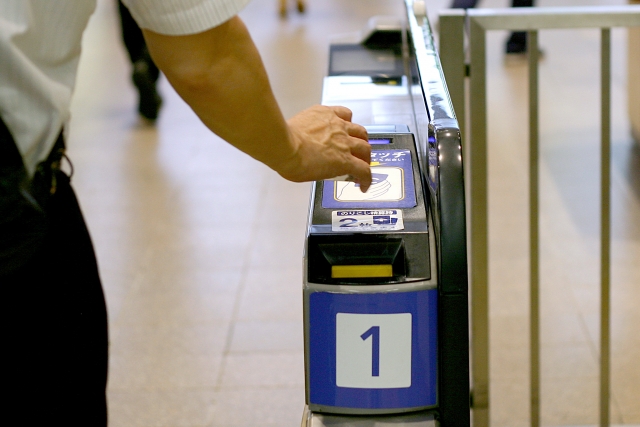
If you’re going to be using the same line to commute to school every day, you may also want to look into getting a student commuter pass (tsugaku teikiken), which you can buy at bus, train, or subway ticket counter.
Kyoto Buses
If your destination lies off the subway or other train routes, chances are you can get there with ease on a bus.
Unlike the simple layout of the subway system, bus lines cross Kyoto to take you to just about anywhere you need to go. One thing you will want to keep in mind is that there are multiple bus companies in Kyoto, each with their own lines:
Kyoto City Bus: These buses are usually green in color (unless they feature special advertising), and usually make stops throughout the center of the city, including some of Kyoto’s popular tourist spots. These bus lines can also be useful for transferring to trains and the subway.
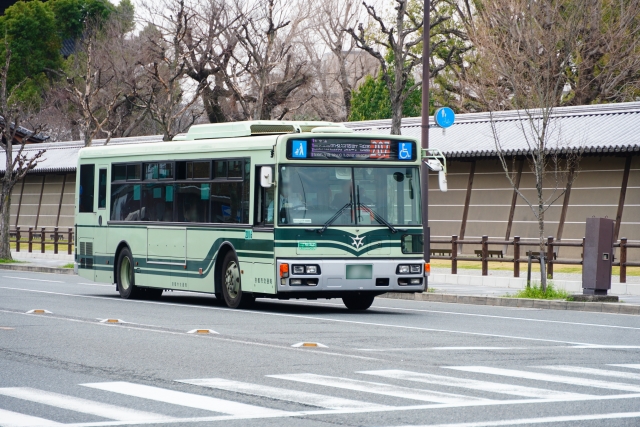
Kyoto Bus: These buses are usually cream and chestnut-colored, and like the Kyoto City Buses, you’ll also see them in the city, but they also serve the suburbs and slightly more distant locations like Ohara and Kibune to the north, and Arashiyama/the Sagano area to the west.
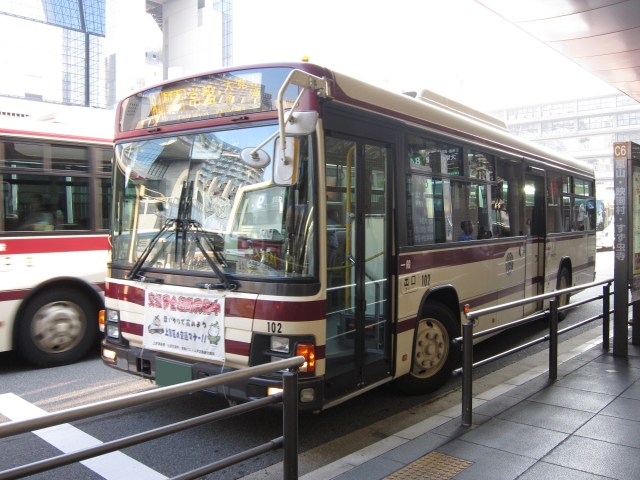
Keihan Bus: You’ll mostly see these red-and-white buses in the Yamashina/Daigo and Mt. Hiei areas to the northwest of Kyoto City.
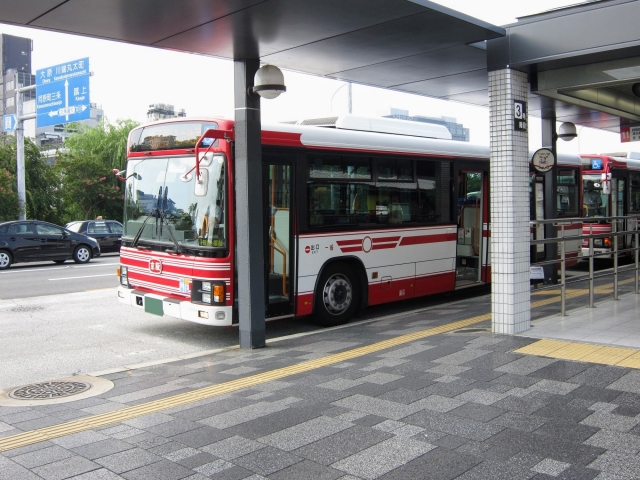
It’s probably simplest to use an app like Google Maps or JapanTransit (乗換案内) to find the best bus route for your destination. Bus stops will be marked with a number and a bus schedule for the buses of each bus company that stops there. Just be sure to double-check weekend/holiday vs. weekdays times.
How to ride the bus in Kyoto: tickets and IC cards
You can pay for a ride on Kyoto buses when you get off at your stop. Just be aware that unlike buses in some other countries, Kyoto buses are boarded from the rear, and riders get off at the front (see here for more details on how to get on and off Kyoto buses). (This may vary depending on the bus)
If you’re paying for your fare with cash, you can deposit the amount in the coin box at the front of the box when you get off, but be careful to put in the exact amount! If you don’t have exact change, most buses also have a coin changer that can change 1,000 yen bills into coins at the front of the bus. You can also use an IC card and not have to worry about counting out your coins–just tap your card on the machine by the driver when you get off.
Day Passes
If you’re heading out for a busy day of bus riding, you can also take advantage of Kyoto’s Subway & Bus 1-Day Pass. For 1,100 yen (as of July, 2024), this pass lets you ride both the Kyoto subway lines and the following bus company lines as many times as you’d like in a day: Kyoto City Bus, Kyoto Bus, Keihan Bus, and West Japan JR Bus (some lines are excluded). You can buy the Subway & Bus 1-Day Pass at ticket windows in Kyoto subway stations, on Kyoto City Buses, commuter pass sales offices, or at Kyoto City Bus & Subway Information Centers (see locations here).






